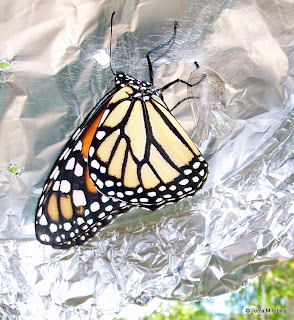It's been ages since I posted. I had computer problems and after they were fixed, I couldn't decide what to write about, what a friend back in England used to call a "rictus of indecision." While I sort out my rictus, I'll post some pix, with comments.
First, a couple of disasters:
This is my wonderful Souv. de la Maison that I heaped praise upon in my last post. I woke up one morning to find it completely wilted. I figured out that a certain dog had attempted to catch a squirrel or rat that must have run across the string of garden lights immediately above the pot and pretty much flattened the rose. There was an indentation of a paw print that gave the game away. Still, I think it will live to see another day. (
Why do I still love my dogs?!)
The sky blue cluster vine,
Jacquemontia pentanthos, is an endangered native, but can be found in a few nurseries. Two days after planting, it turned brown. Rats! With its little bright, bright blue flowers, it's such a pretty vine in the morning glory family. Click
here for a close up of the flowers. I'm hoping that it isn't entirely dead, not least because it was an expensive plant and the nursery is 30 miles away.
But onto happier things:
This is a very old vanda that belonged to my husband's late aunt. She died in 1986 and she'd grown it for many years prior to that. It has a lovely old-fashioned look to it, and must have wowed orchid enthusiasts back in the day. I'm so glad I'm able to keep it going.
How do you tell if bananas are ripe? These only look yellow in the late afternoon sun, and they haven't done much for a couple of months except get a bit fatter. What gives? Tips and explanations are welcome.
I found these lovely
Neoregelias, above,
at a garage sale, while ...
... somebody threw these gorgeous broms onto a trash pile. I'm always happy to adopt unwanted specimens.
The second raised veggie bed, at the rear, has been built. Thanks, Dan!
The garden cherub is still standing, although his head frequently rolls off; they were parted when I found them at an estate sale. However, the dogs (grrrr) are responsible for breaking the lute, which I keep promising myself I will glue back on. It's only been two years ...
A clump of Philippine violets,
Barleria cristata, is flowering prolifically by the bridge.
The pink Jatropha flowers all year round. But, best of all ...
... my Natchitoches noisette is about to produce a million blooms.
And hasn't the weather been lovely?
































































.jpg)



